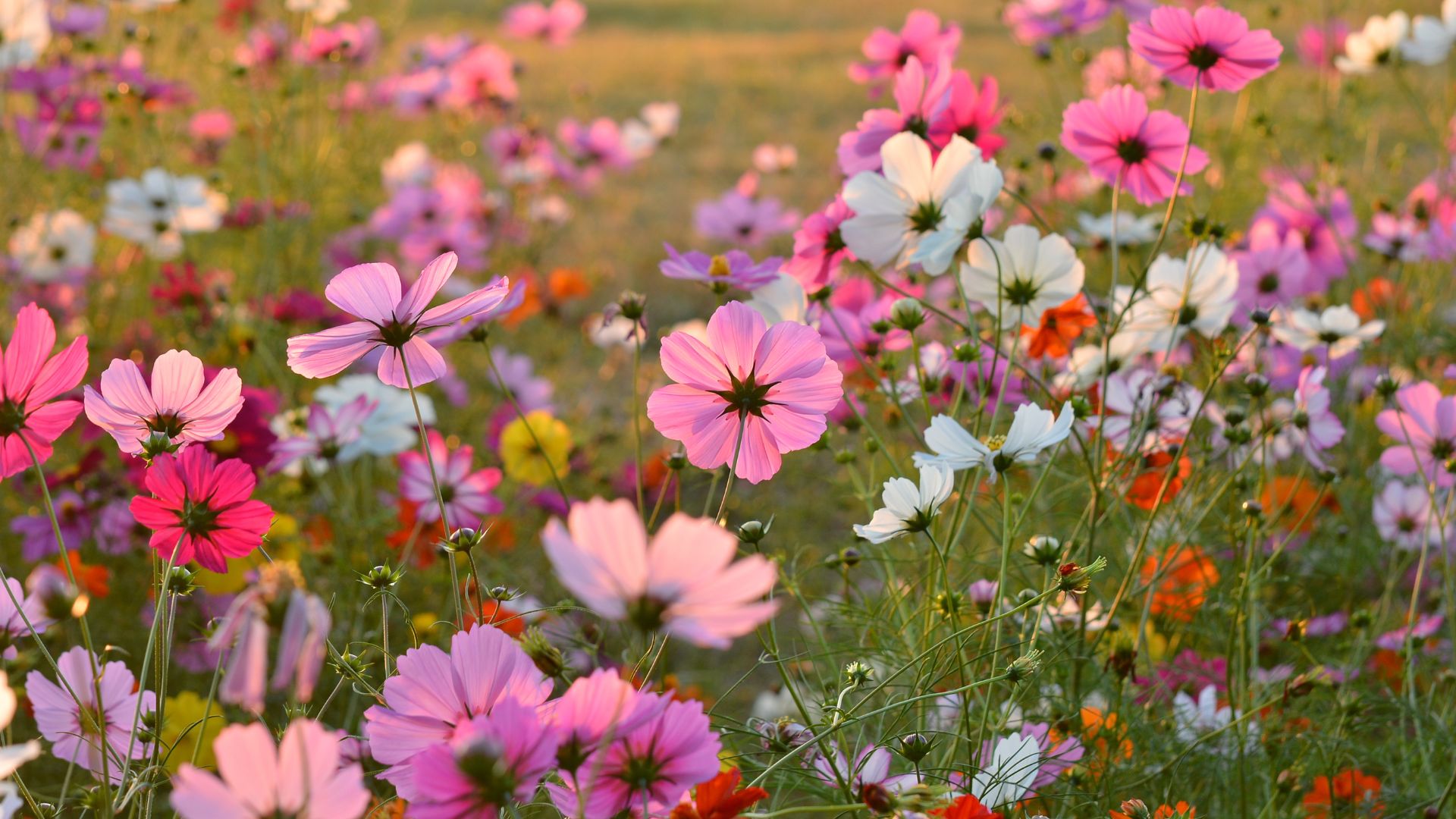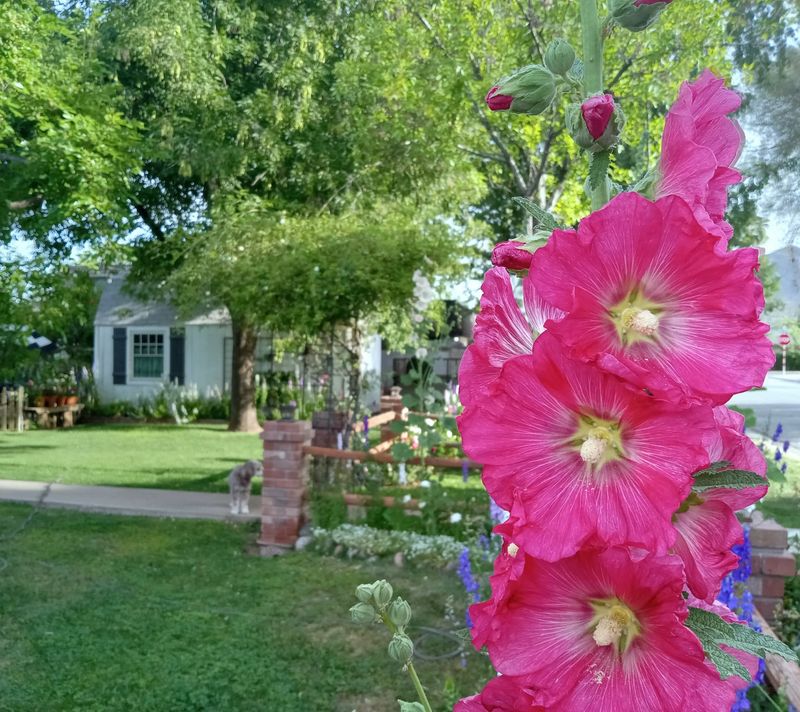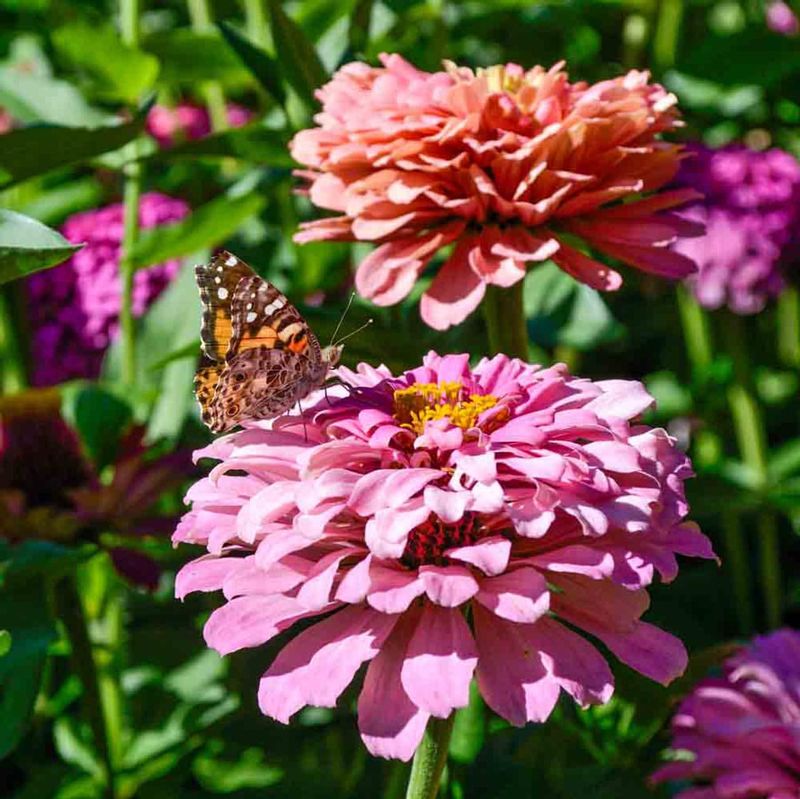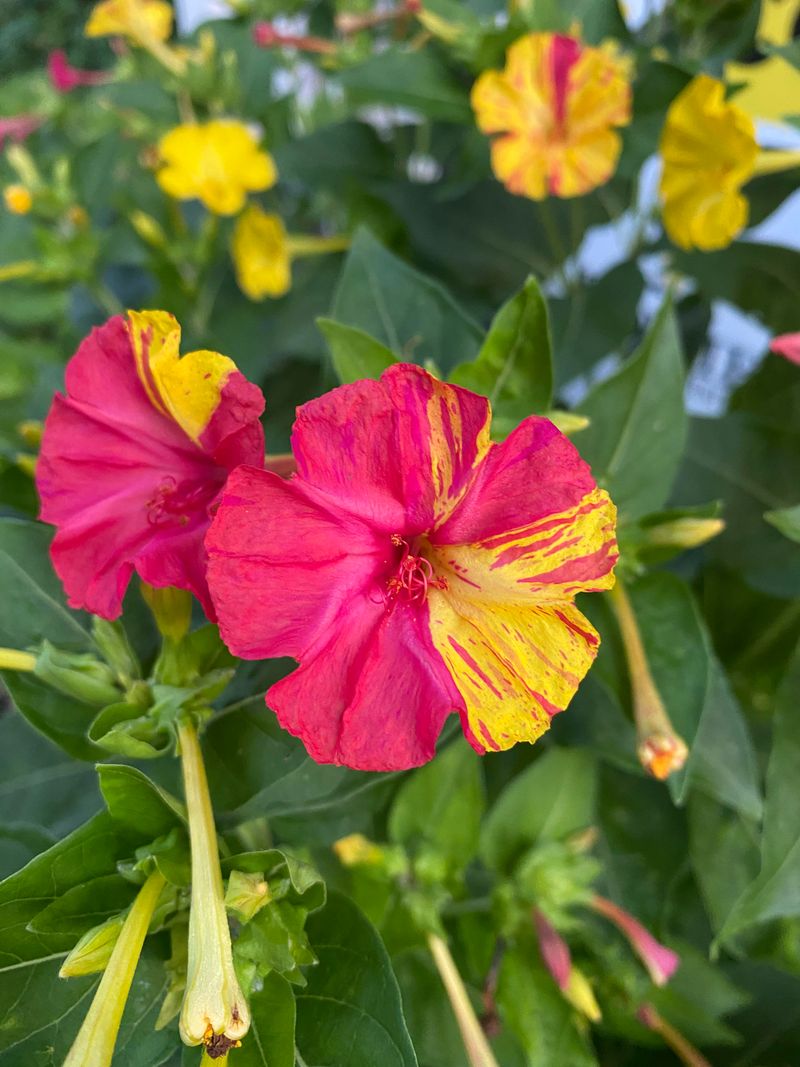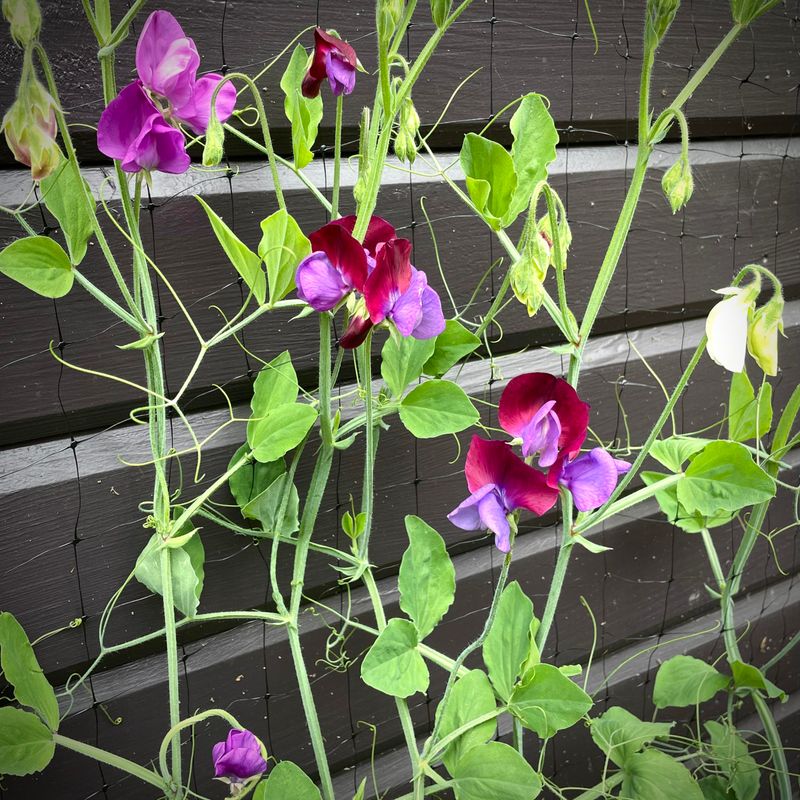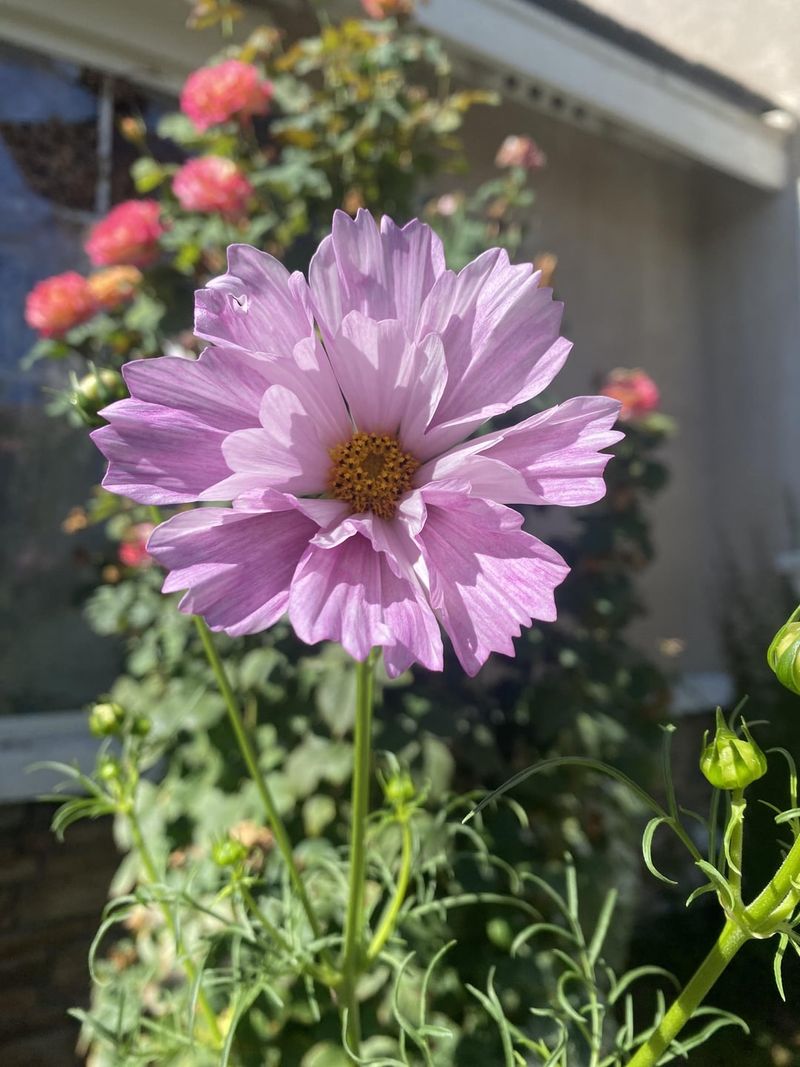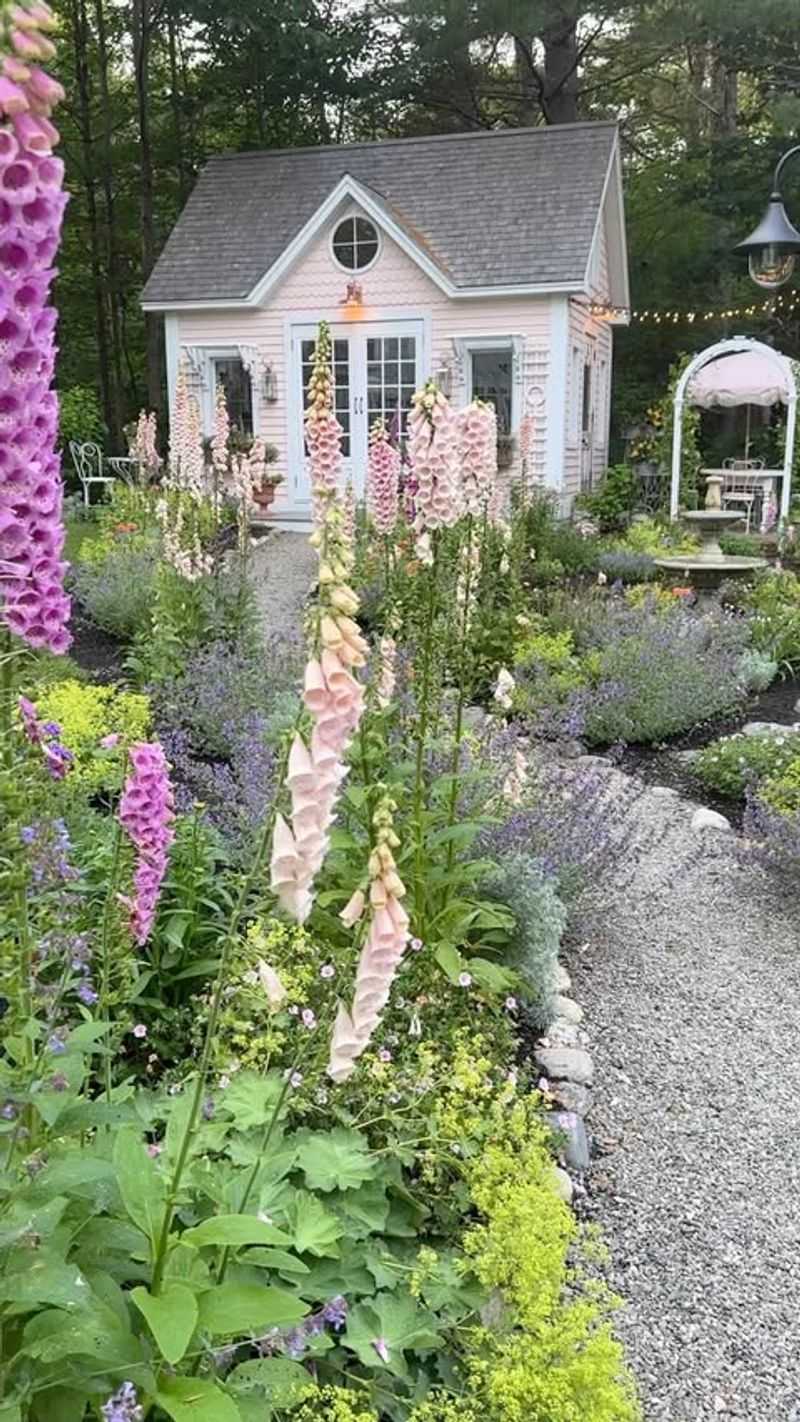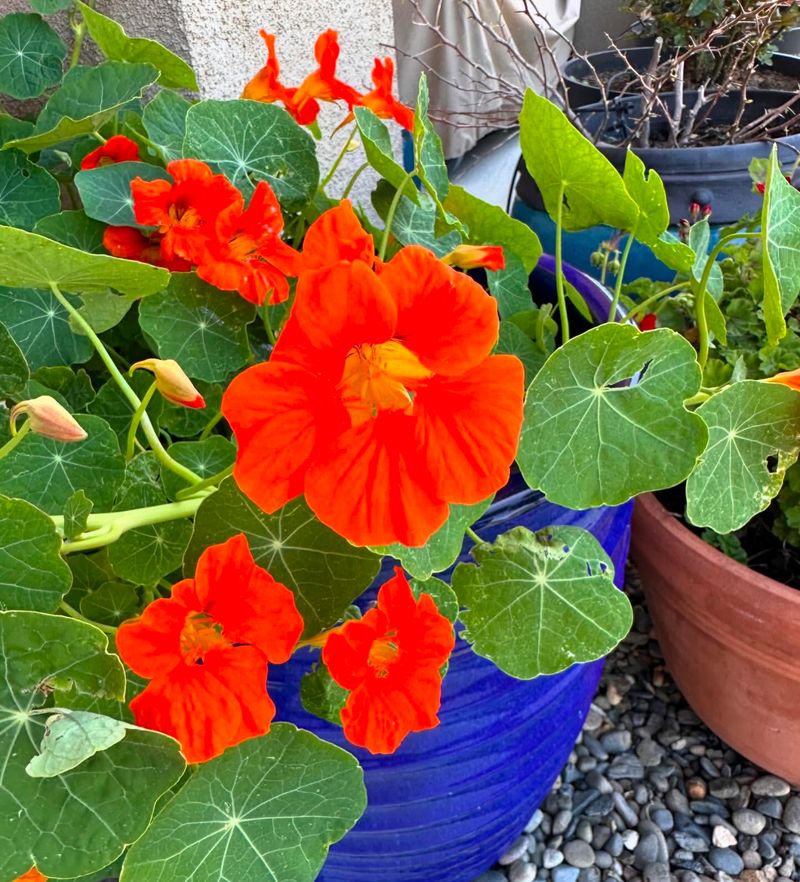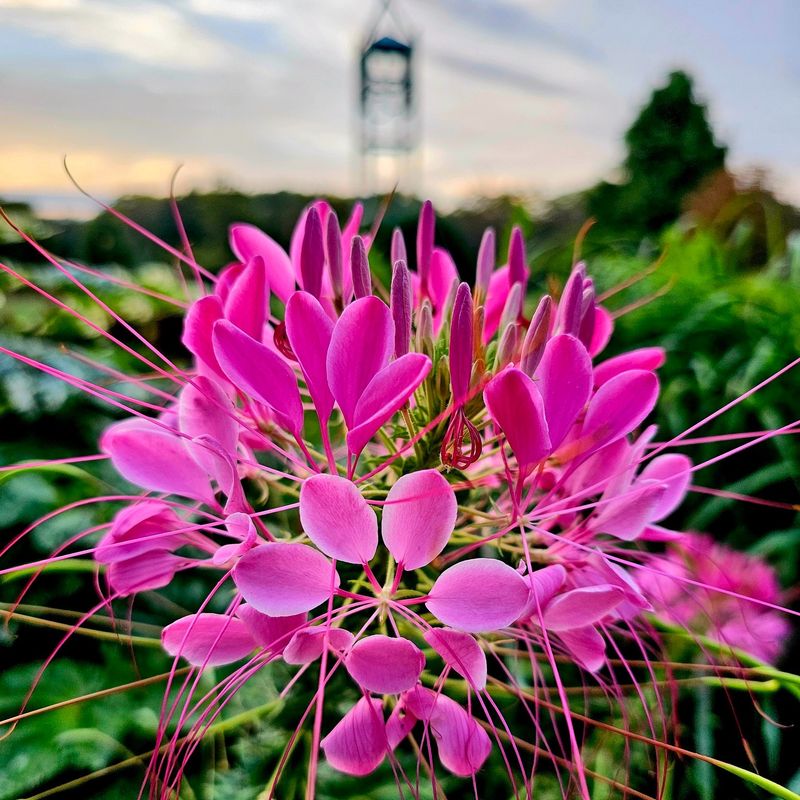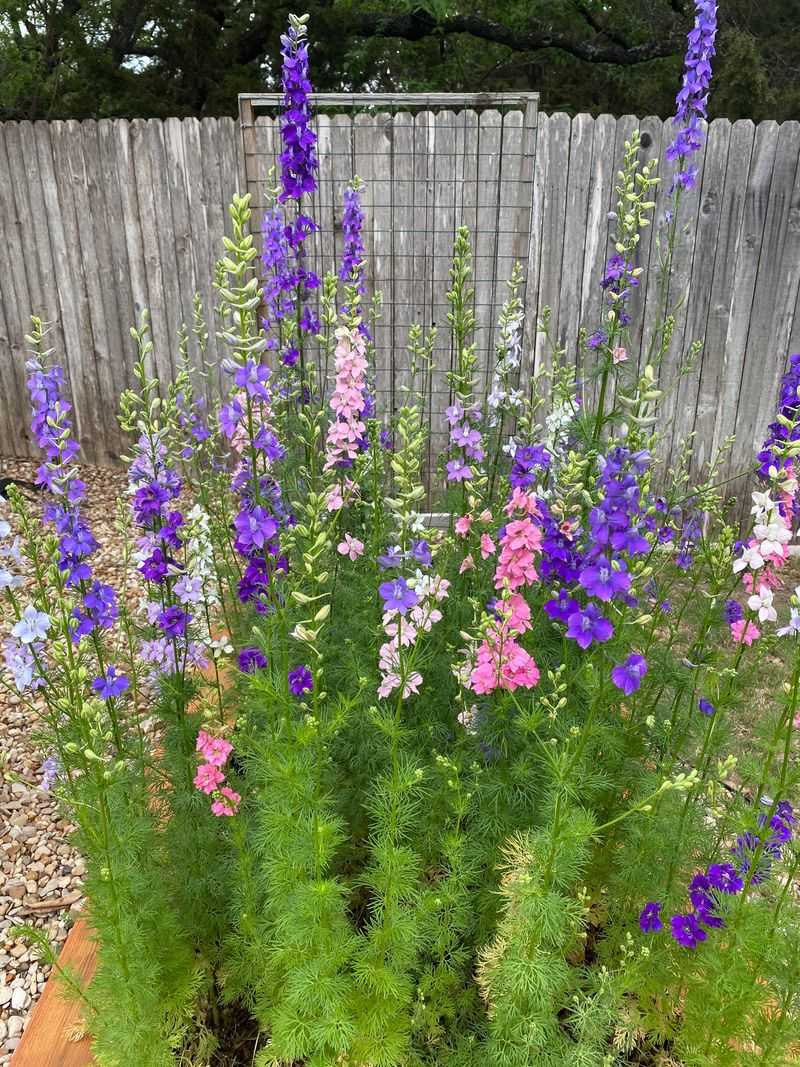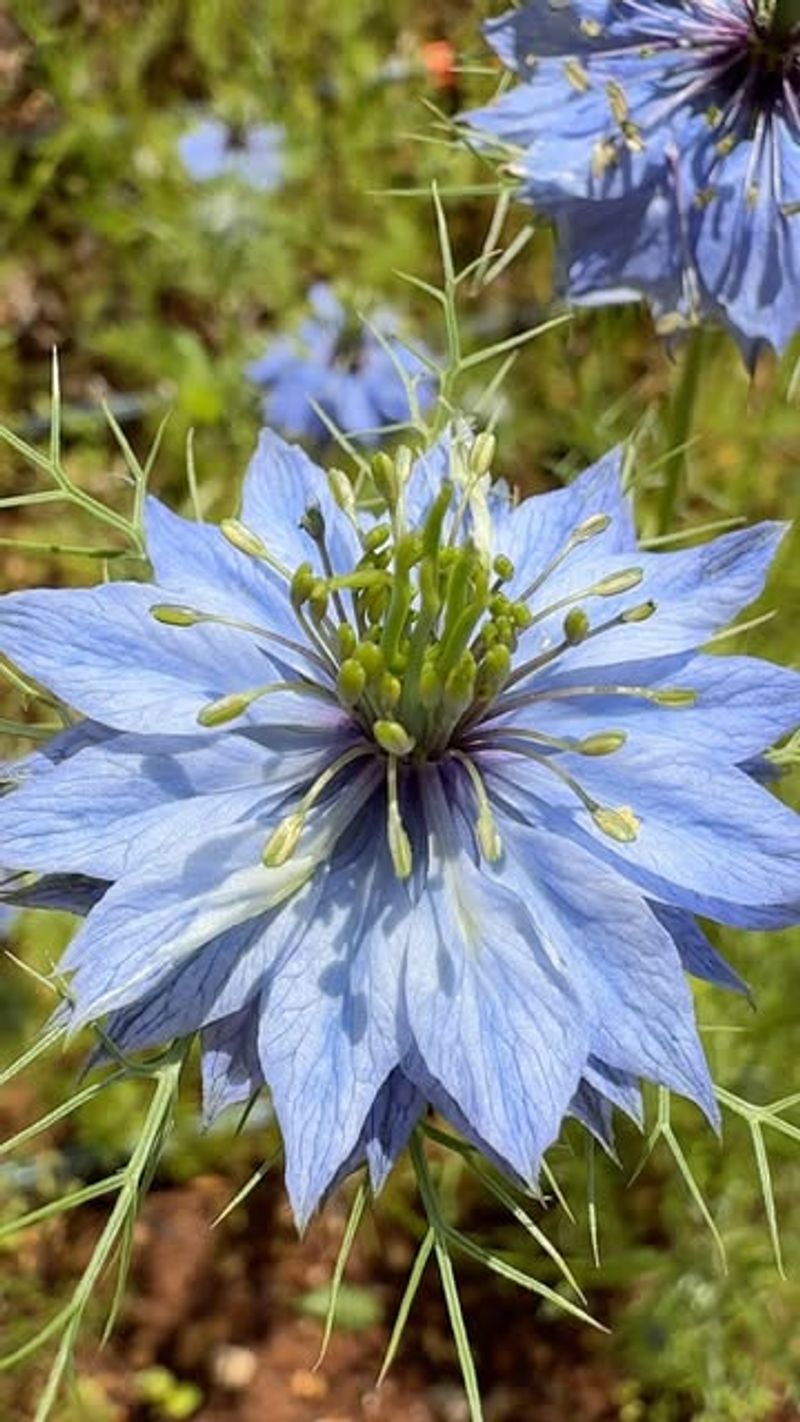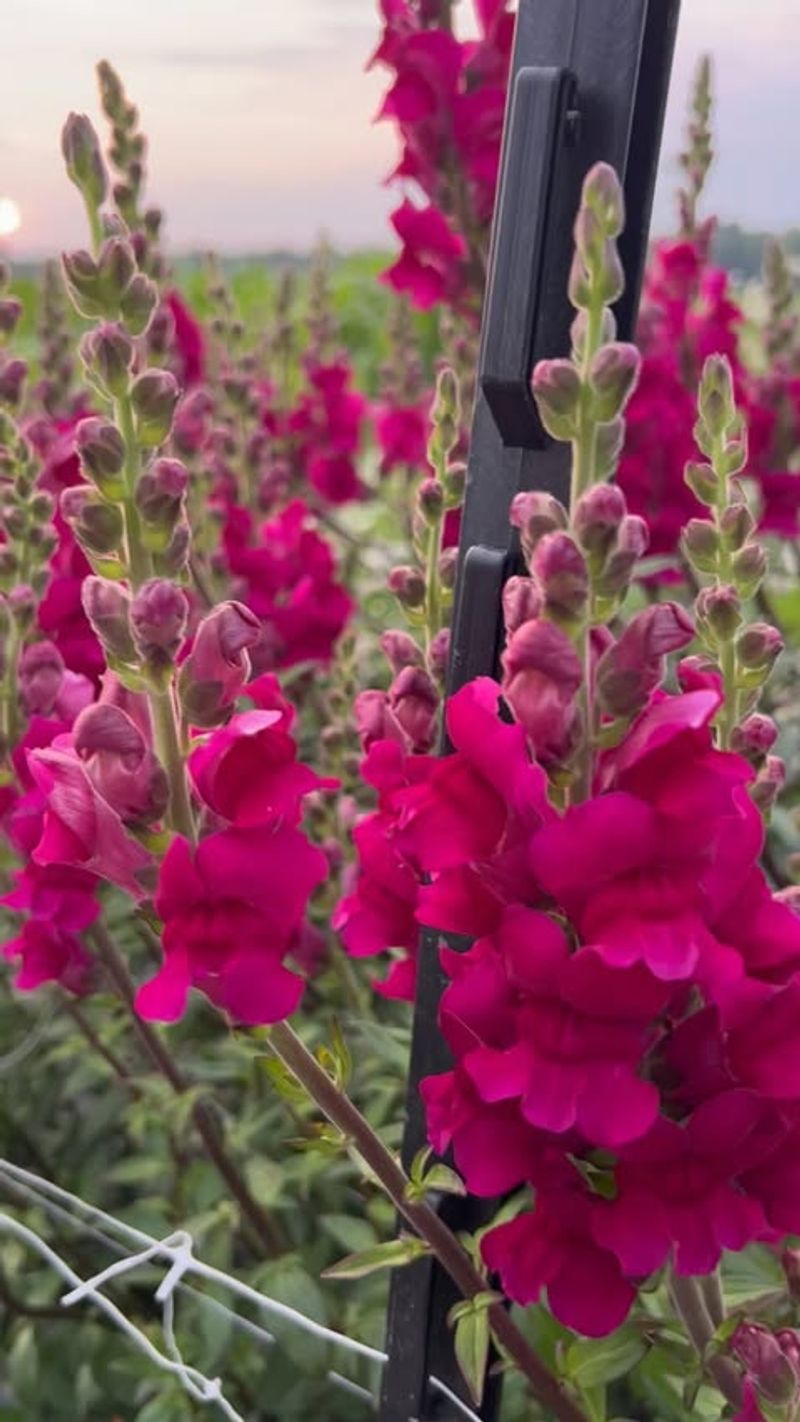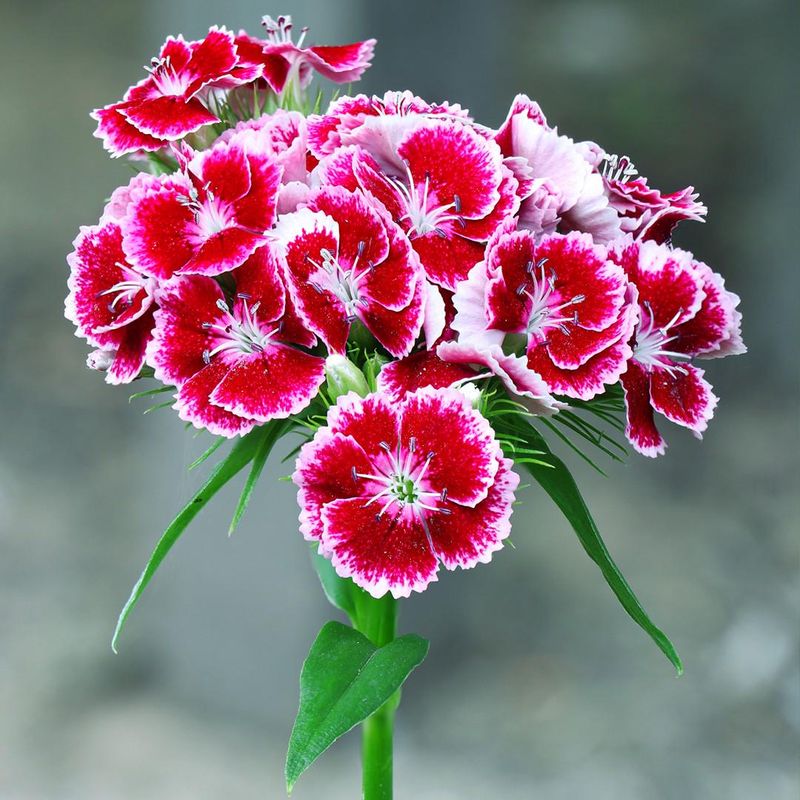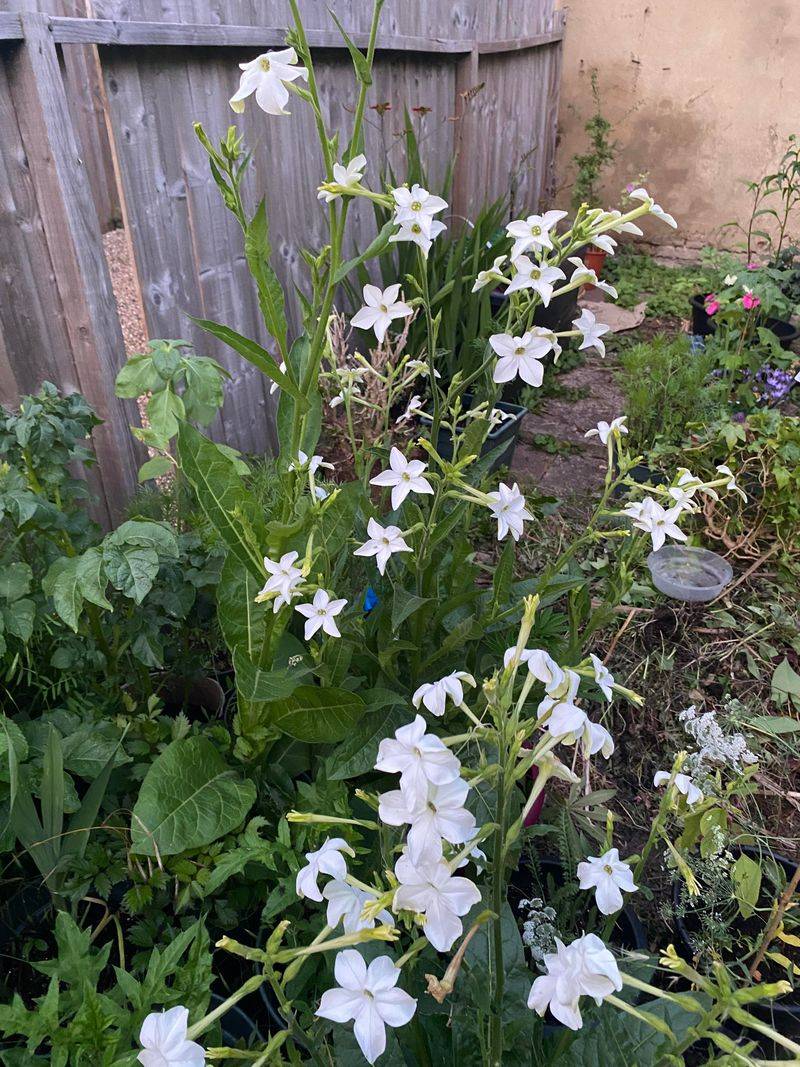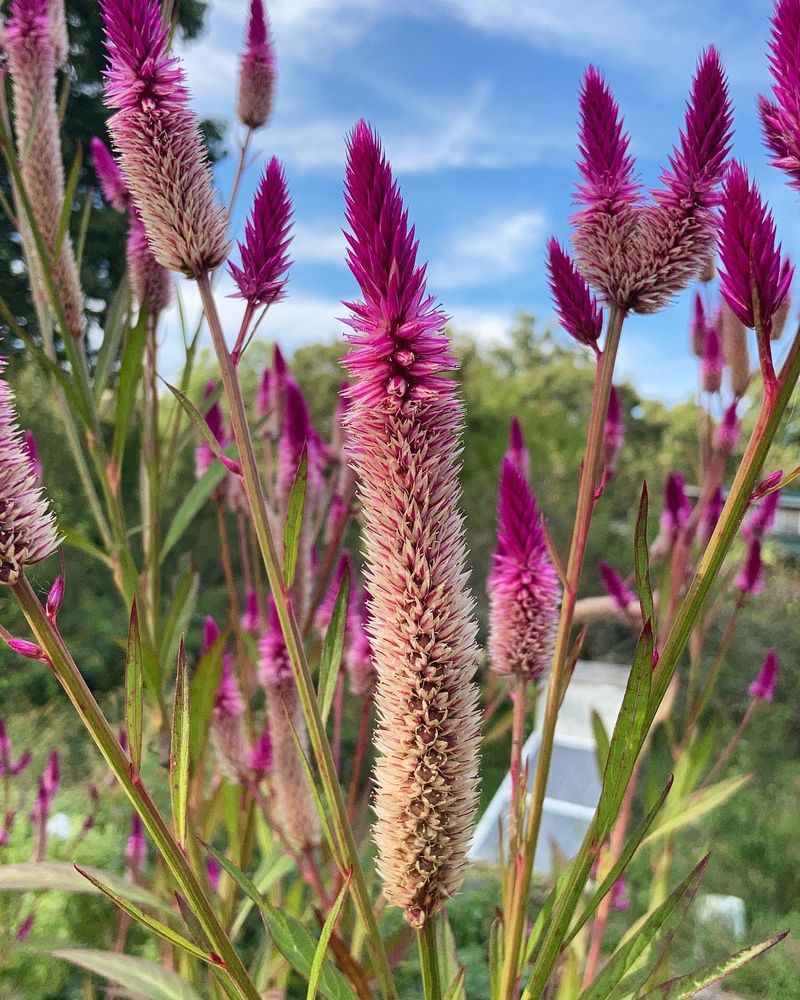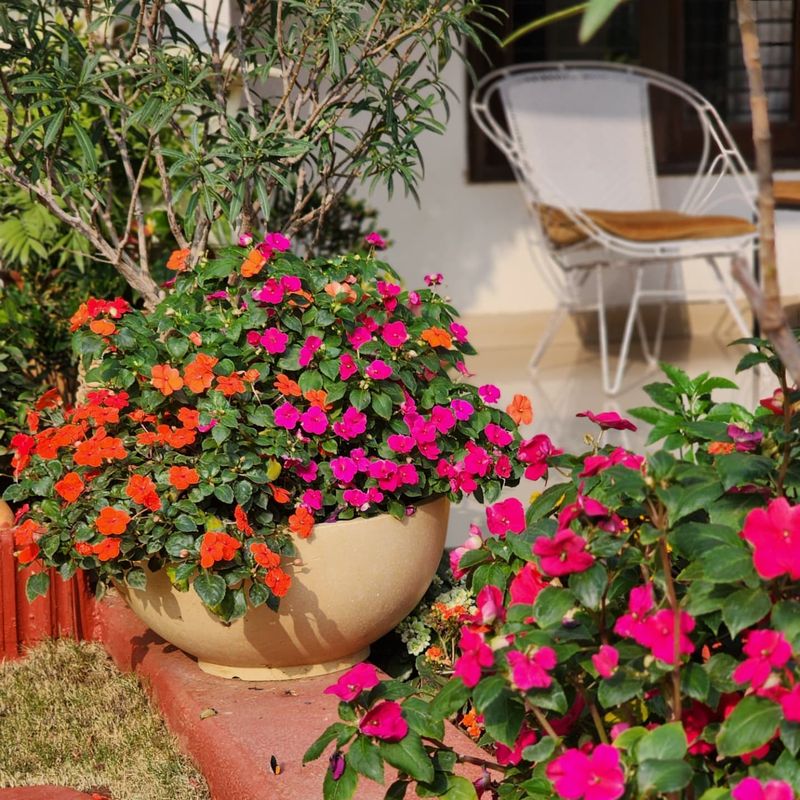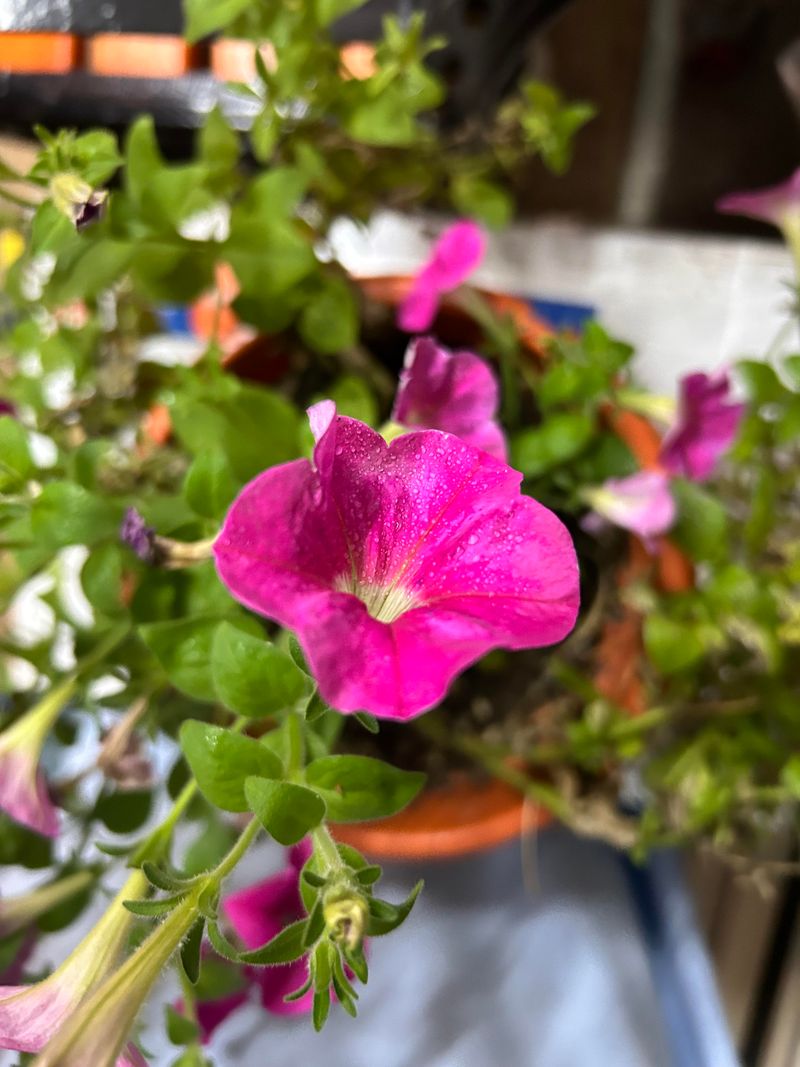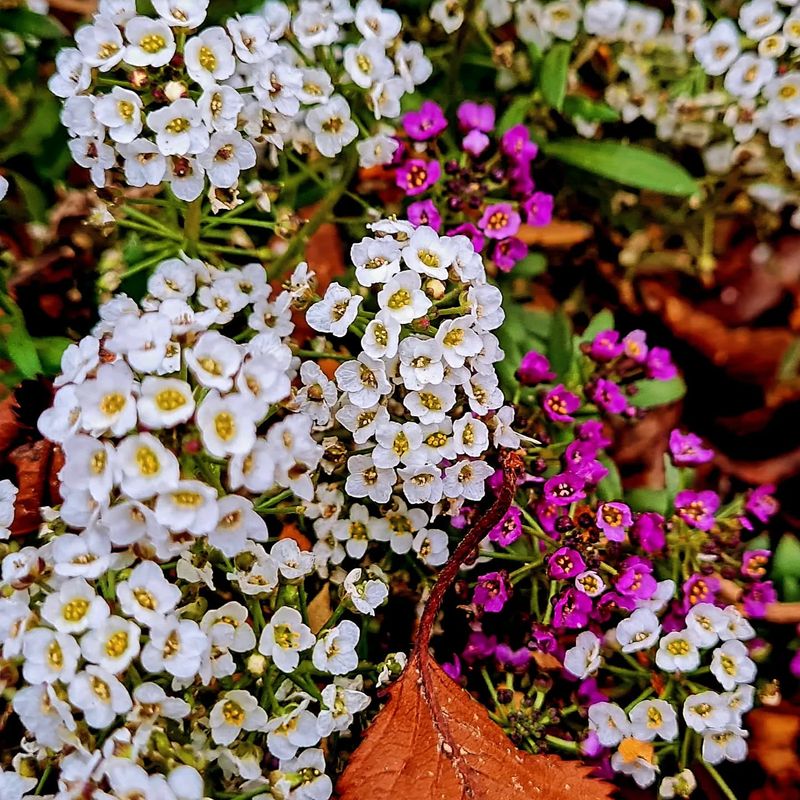Alabama gardens are witnessing a charming revival as heirloom flowers make their way back into local landscapes. These treasured blooms, once tended by our grandparents and great-grandparents, bring both beauty and a sense of heritage to modern yards across the state.
The rich clay soils and humid summers of Alabama create perfect conditions for many of these classic varieties to thrive. From front porch containers to sprawling cottage gardens, these timeless flowers connect us to generations past while adding character no modern hybrid can match.
As more gardeners seek sustainable, low-maintenance options that attract pollinators, these old-fashioned favorites offer proven reliability in our sometimes challenging southern climate. Many have adapted to Alabama’s growing conditions over decades, making them natural choices for today’s garden enthusiasts.
1. Hollyhocks
Standing tall against garden fences, these dramatic spires have returned to Alabama’s rural and suburban landscapes alike. Their candy-colored blooms climb upward on sturdy stalks, creating natural privacy screens and butterfly magnets.
Country gardens throughout the state showcase these biennial beauties from late spring through summer. What many don’t realize is hollyhocks self-seed readily, establishing colonies that return year after year with minimal effort.
2. Zinnias
Remember those cut-flower bouquets that seemed to last forever on Grandma’s kitchen table? Chances are good they featured zinnias, the quintessential summer flower that thrives in Alabama’s heat.
Their daisy-like blooms come in every color except true blue, attracting butterflies by the dozens. Many Alabama gardeners sow zinnia seeds directly in the ground after the last frost, creating informal cottage gardens that bloom until fall’s first chill.
3. Four O’Clocks
As afternoon shadows lengthen across Alabama yards, these fragrant flowers unfurl their trumpet-shaped blooms right on schedule. True to their name, they open around 4 p.m., releasing a sweet perfume that draws hummingbirds and sphinx moths.
Tough enough for our hottest summers, four o’clocks form shrub-like plants that return reliably from their tuberous roots. Many gardeners across the state treasure seeds passed down through family lines, preserving heirloom varieties for future generations.
4. Sweet Peas
Nothing captures the essence of spring quite like the delicate fragrance of sweet peas climbing a trellis. In Alabama’s northern counties, these cool-season annuals perform best when planted in late fall for early spring blooms.
Their ruffled petals in pastel shades create the perfect cutting garden addition. Gardeners who remember their grandmothers growing sweet peas along fence lines are now rediscovering these romantic flowers, training them up decorative supports for vertical interest.
5. Cosmos
When summer heat has most flowers wilting, cosmos dance above feathery foliage in Alabama gardens. Their daisy-like blooms in shades of pink, white, and burgundy seem to float on slender stems, creating movement with every breeze.
Gardeners across the state appreciate how these drought-tolerant annuals thrive in poor soil with minimal care. A single packet of seeds can fill an entire border, attracting goldfinches that perch acrobatically on the spent seedheads well into fall.
6. Foxgloves
Along woodland edges and in dappled shade throughout Alabama, the spotted throats of foxgloves create vertical drama. These biennial beauties self-seed gracefully, establishing colonies that return year after year in gardens lucky enough to host them.
Southern gardeners particularly prize the resilient varieties that withstand our humid summers. When planted among ferns and hostas in north-facing beds, foxgloves create that timeless cottage garden feel that’s experiencing a renaissance in Alabama’s historic neighborhoods.
7. Nasturtiums
Down south, we’ve rediscovered these edible blooms that spill cheerfully from containers and scramble along garden edges. Their lily pad-shaped leaves and jewel-toned flowers in sunset shades add both beauty and function to Alabama gardens.
Culinary gardeners appreciate nasturtiums for their peppery flowers that brighten up summer salads. Even in our clay soils, these easy-going annuals thrive with minimal fussing, offering continuous blooms until summer heat peaks.
8. Cleome
Known affectionately as spider flowers, cleome creates architectural interest in Alabama’s summer gardens when many other blooms have faded. Their unique flowers feature long, whiskery stamens that give them an exotic appearance despite their old-fashioned pedigree.
Once planted, you’ll rarely need to sow them again. Throughout central and south Alabama, cleome reliably self-seeds, popping up in garden beds year after year. Hummingbirds dart between the tall stems from July through September.
9. Larkspur
Before summer’s heat blankets Alabama, the delicate spires of larkspur create a sea of blue, pink, and white in spring gardens. Unlike their fussier cousins, delphiniums, larkspurs thrive in our southern climate when sown in fall.
Many Alabama gardeners scatter seeds directly in flower beds after Thanksgiving, allowing winter rains to establish these cottage garden classics. By April, their paper-thin petals dance above ferny foliage, creating picture-perfect scenes in gardens throughout the state.
10. Love-In-A-Mist
Few flowers capture the delicate charm of grandmother’s garden quite like love-in-a-mist, with its star-shaped blooms nestled in feathery foliage. Alabama gardeners treasure this spring annual for its soft blue flowers and decorative seedpods that follow.
Fall-sown seeds produce the strongest plants, blooming just as azaleas finish their show. After flowering, the ornamental seedpods can be dried for arrangements, continuing to bring beauty indoors long after the garden blooms have faded.
11. Snapdragons
Along borders and pathways throughout Alabama, snapdragons are making a colorful comeback. Unlike newer varieties, heirloom snapdragons offer that distinctive fragrance that transports many gardeners back to childhood.
In our state’s mild winters, these cool-season bloomers often survive from fall through spring. The trick many Alabama gardeners have rediscovered is planting them in September rather than waiting for spring, allowing roots to establish before winter arrives.
12. Sweet William
With their clustered blooms in rich jewel tones, Sweet William flowers are returning to Alabama gardens after years of being overlooked. Their spicy clove scent wafts through spring air, attracting both butterflies and nostalgic gardeners.
Though technically biennials, these sturdy plants often behave like short-lived perennials in Alabama’s climate. Planted in drifts among roses and peonies, they create that layered, abundant look that defines traditional southern gardens.
13. Nicotiana
As evening approaches in Alabama gardens, the trumpet-shaped flowers of nicotiana release their sweet perfume. Often called flowering tobacco, these elegant plants were once fixtures in southern gardens before falling out of fashion.
Now they’re back, gracing moonlight gardens across the state with their fragrant white blooms. Many gardeners plant them near patios or porches where their evening scent can be enjoyed during Alabama’s long summer nights.
14. Bachelor’s Buttons
Along country roads and in cottage gardens throughout Alabama, the cheerful blue blooms of bachelor’s buttons are making a welcome return. Their fringed petals and true-blue color make them stand out among more common garden flowers.
Easy to grow from seed scattered directly in the garden, these hardy annuals bloom from spring into early summer. Alabama gardeners appreciate how they tolerate our clay soils and attract beneficial pollinators to vegetable gardens.
15. Cockscomb
Nothing says southern garden quite like the crested blooms of cockscomb celosia standing proud through Alabama’s hottest months. Their brain-like flower heads in rich crimson, gold, and magenta seem to intensify as temperatures rise.
Passed-down seeds are treasured by gardening families across the state. Many Alabama gardeners harvest the mature flowerheads in fall, preserving them for dried arrangements while saving seeds that connect them to previous generations of family gardeners.
16. Balsam
Known to many grandmothers as “touch-me-nots,” balsam flowers bring old-fashioned charm to shady corners of Alabama gardens. Their camellia-like blooms in candy colors appear all along upright stems, creating vertical interest where few other flowers thrive.
Heat-loving and drought-resistant, these self-sowing annuals have been rediscovered by gardeners seeking low-maintenance beauty. Children delight in the exploding seedpods that give balsam its nickname, ensuring its seeds spread throughout Alabama gardens.
17. Morning Glories
Climbing gracefully over Alabama garden fences and trellises, morning glories unfurl their jewel-toned trumpets with the day’s first light. By afternoon, these ephemeral blooms have closed, making their daily show all the more precious.
Heirloom varieties with names like ‘Grandpa Ott’ and ‘Heavenly Blue’ are particular favorites throughout the state. Many Alabama gardeners still follow the old tradition of soaking seeds overnight before planting, ensuring quick germination of these vigorous vines.
18. Petunias
Before hybridized versions took over garden centers, old-fashioned petunias filled Alabama gardens with their distinctive sweet fragrance. Unlike modern varieties, these heirloom bloomers produce smaller flowers but compensate with intense perfume, especially in evening hours.
Many gardeners across the state have returned to growing these traditional varieties from saved seeds. Though they require deadheading to keep blooming, their charm and scent make them worth the extra effort in porch containers and garden beds.
19. Marigolds
Walk through any Alabama vegetable garden and you’ll likely spot the sunshine-bright blooms of marigolds standing guard. Generations of southern gardeners have planted these aromatic flowers alongside tomatoes and peppers, following traditional companion planting wisdom.
Beyond their pest-repelling reputation, marigolds bring weeks of color to Alabama gardens. The practice of saving marigold seeds is experiencing a revival, with gardeners carefully collecting the distinctive black seeds from spent blooms to continue the cycle next season.
20. Sweet Alyssum
Spilling over garden edges and softening pathways throughout Alabama, sweet alyssum creates clouds of tiny, honey-scented flowers. These low-growing spreaders have returned to favor for their ability to bloom nearly year-round in our mild southern climate.
Many Alabama gardeners use alyssum to edge rose beds or vegetable gardens, where they attract beneficial insects. The traditional white varieties remain most popular, creating the effect of garden beds trimmed with delicate lace.

